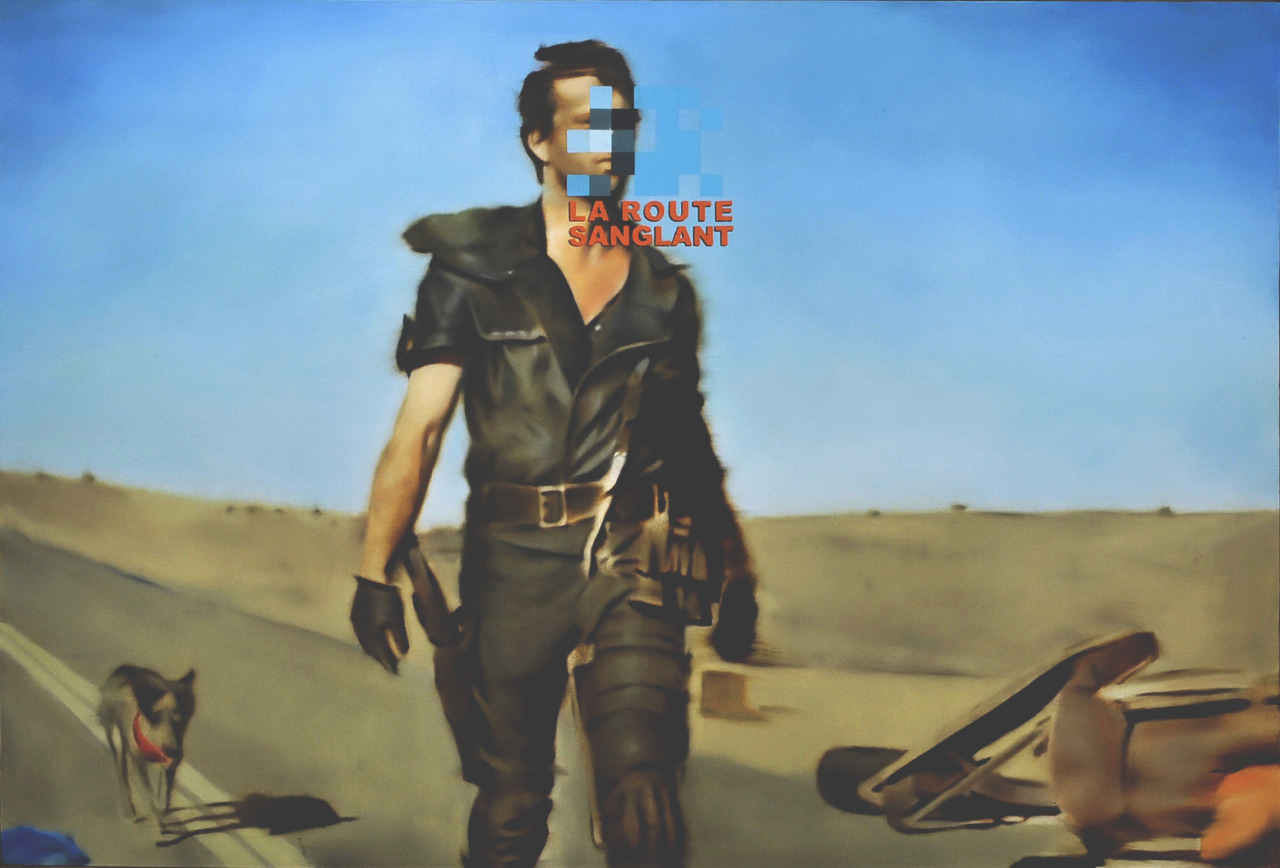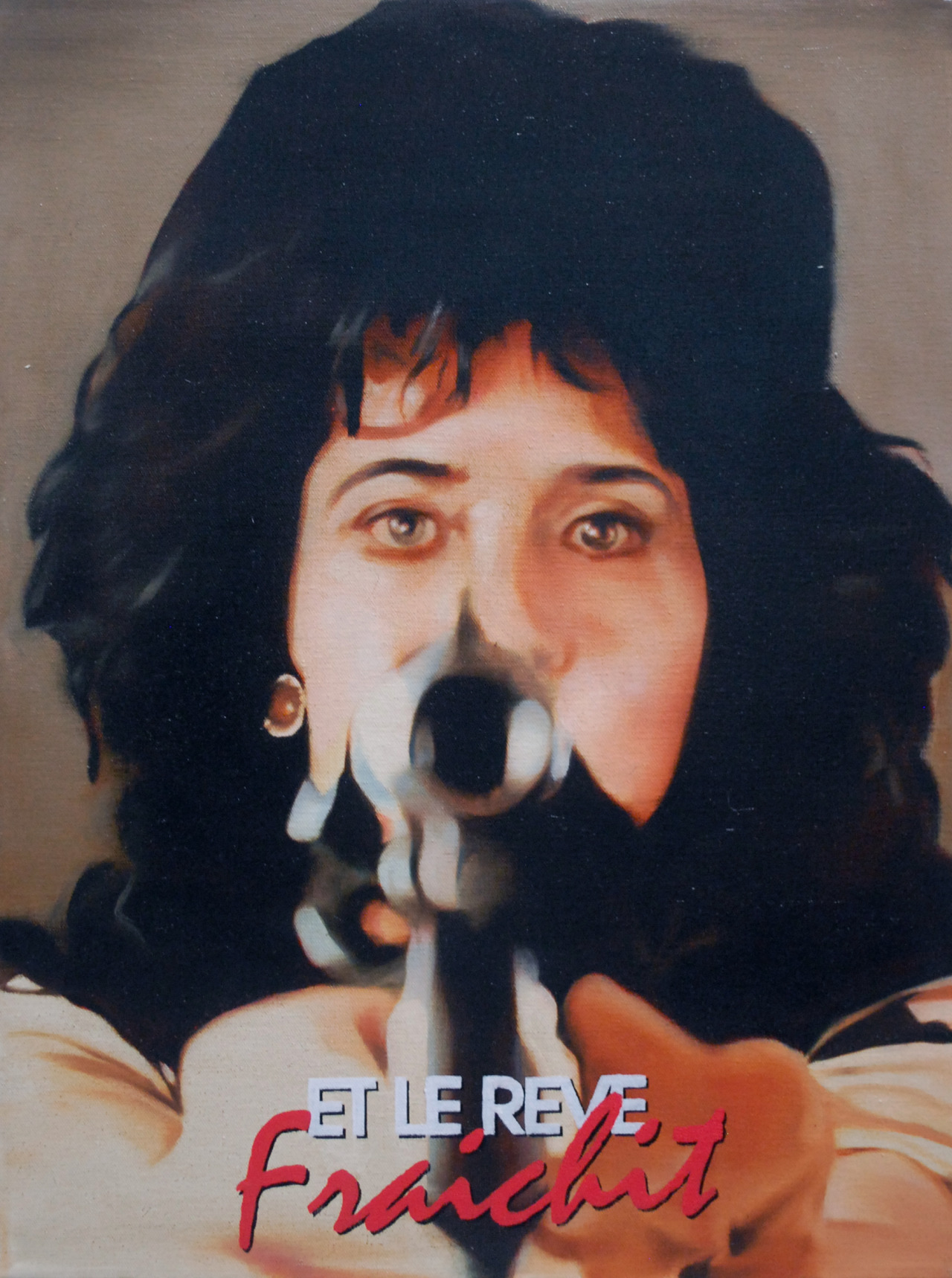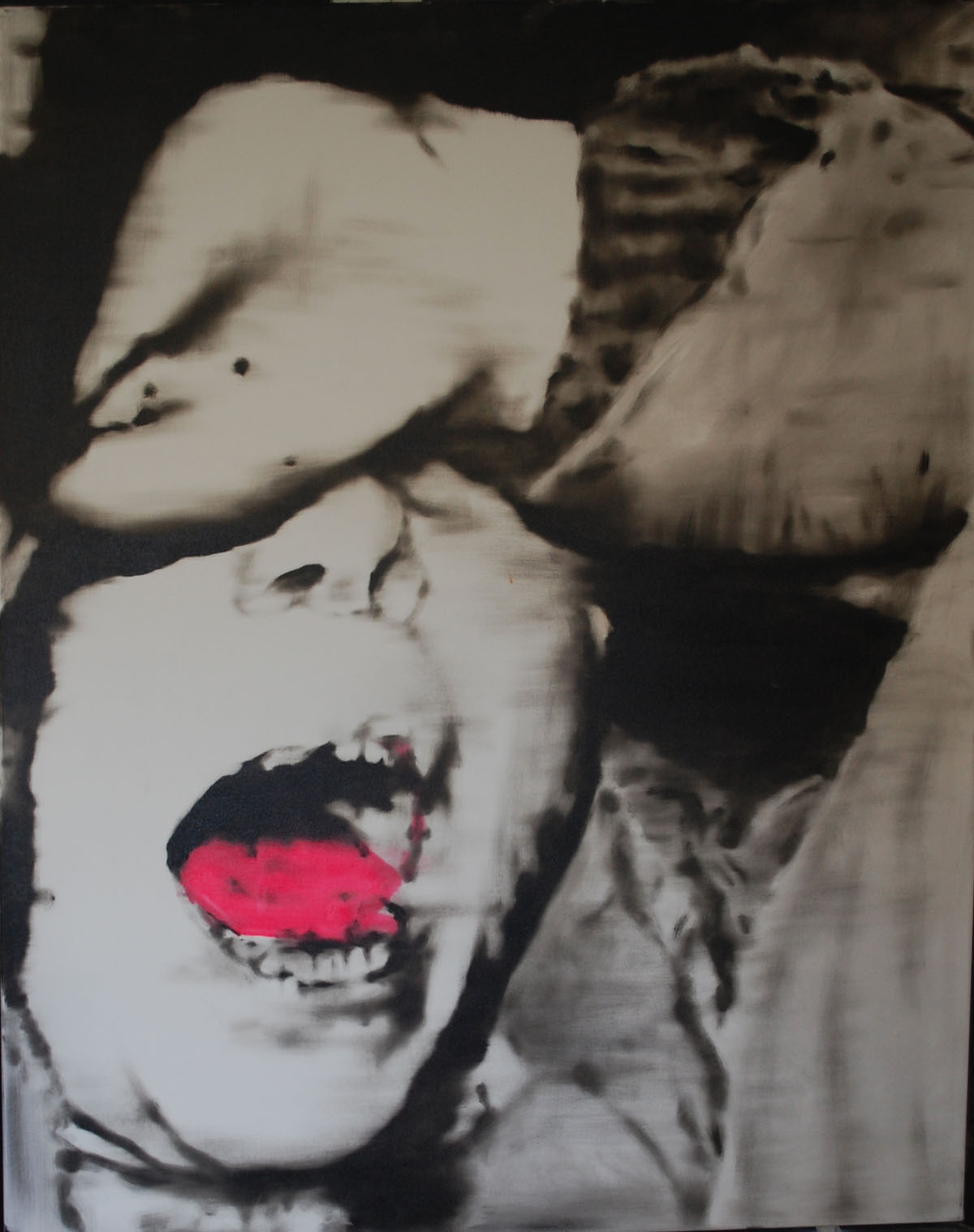(1985)
William Arvin's work follows the recent tradition of press photos, advertisements and film stills, that are the common targets of appropriation, and have been for decades since the dramatic spike of their ever-growing presence in our daily lives. With immediate access to nearly every possible image and every form of media in the limitless landscape of digital space, the subjects are naturally rather disparate from one another, both in content and source media. Social upheaval, cinematic escape and the authority of advertisement are just a few of the issues that lie beneath the images, although, all politics aside, bringing physical form to these fleeting digital encounters under the umbrella medium of paint on canvas is of primary concern.

The role of text in his work serves multiple purposes; it asserts his own obscure sentiments toward the image in question, creates a familiar visual language that viewers speak fluently, that of the calculated design of advertisement, and drives a wedge between the viewer and the illusionistic space of the image, adhering all forms to the flatness of the canvas.


Flatness against space is also explored through the pixelation of areas in certain images, offering an automatic and systematic form of abstraction. Relying on the predetermined organization of information in digital images, he is free to focus less on composition and more on the play and exchange between these units of reality. Creating a system of tightly organized units within an image is no stranger to the process of painting, however here the process is laid bare, maintaining the unique character of each unit, as well as directly referring to their digital origins.
